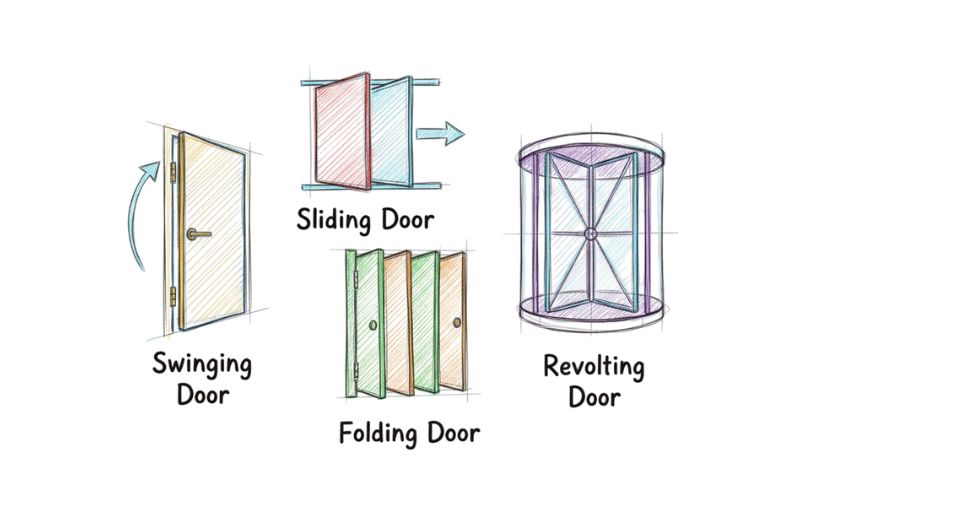
Oct 29, 2025

The modern built environment operates on functionality and design which blend safety, convenience, and sustainability. All public buildings, residential estates, and industrial plants rely on access systems which dictate the way people and goods move efficiently and securely. The global door systems market by Metastat Insight illustrates how shifting lifestyles, architectural creativity, and construction technologies are reshaping what was previously a modest building component into a sophisticated interface between people and space. From automatic doors in commercial buildings to secure industrial gateways, the demand for effective systems is tracking with modernization and greater emphasis on energy-saving, easy-to-use systems.
Market Context
In construction, building, and urban infrastructure, the need for durability, flexibility, and security in access points has increased significantly. The trend of building with automation and environmentally friendly materials has brought forth interest in access solutions with complete potential integration into smart structures. Stringent demands for safety, higher energy efficiency requirements, and aesthetics have increased the importance of doors beyond their utility needs.
Door systems are an important bridge between architectural design and occupant experience, delivering solutions to address an array of performance requirements ranging from acoustical control and thermal insulation to fire protection and accessibility. As spaces become increasingly intelligent and networked, manufacturers and designers are adapting door systems that combine mechanical reliability with digital intelligence, a larger trend toward how environments are today being designed and built.
How It Works / Why It's Valuable
Door systems of today go far beyond classical hinge and panel constructions. They utilize materials such as high-end metals, composites, and treated glass to create maximum strength, design flexibility, and operating effectiveness. Automation has taken functionality even further, with features such as touchless entry, sensor-based travel, and remote control that enhance both hygiene and convenience.
The introduction of intelligent control systems also enables advanced security management to guarantee that access points are active building safety devices. Energy management plays a growing role, with insulating doors minimizing thermal transfer and helping to meet environmental objectives. Wherever applied in commercial, residential, or industrial use, value takes the shape of performance delivery, aesthetics, and reliability in a single building, accommodating user comfort and architectural intent.
Growth Story / Technological Evolution
Evolution of door systems market traces the course of a transition from hand-operated structures to precision-fabricated solutions designed for performance and integrity of design. Early development focused on advancing material characteristics and mechanical tolerance, but technological advancements in automation and connectivity have reshaped expectations. Smart sensors, motion controls, and material technologies such as lightweight composites have come increasingly into mass production.
This unobtrusive and consistent transformation has established the sector's position in both developed and emerging construction environments. Companies have continually refined manufacturing processes, leveraging digital design software and pre-emptive maintenance technologies to optimize system life. The direction of the market illustrates how contemporary engineering and age-old craftsmanship have merged in providing solutions that are consistent with global architectural practices and user-enabled functionality.
Regional and Global Trends
Adoption patterns reflect varied dynamics in various regions. Advanced economies exhibit high correlation with smart building schemes, where emphasis is given to automated systems that can ensure energy savings and easy integration with digital infrastructure. Urban centers in such economies continue to show preference for high-end access solutions in public buildings, healthcare centers, and business offices.
Simultaneously, emerging markets demonstrate growing investment in new-generation construction techniques, driven by heightened city development and infrastructural expansions. Heavy-duty, affordable, and eco-friendly door system demand is on the rise across regions with emphasis on urbanization and home modernization. This geospatial diversification indicates a scenario of balanced development where mature markets show sophistication while new markets adopt flexible, performance-based systems at scale.
Challenges and Opportunities
Despite consistent improvement, the business has several practical challenges. Heterogeneity in regulatory requirements across countries would make production and distribution difficult. The production cost associated with high-grade material and high-tech automation also contributes to increased prices. Additionally, competitive forces within the business require constant innovation in design, quality, and sustainability credentials. But the same pressures are huge opportunities.
Convergence with intelligent home platforms, advances in material science, and the global move towards green building all present fertile ground for differentiation. Collaborative partnerships between manufacturers, architects, and information solution providers are pushing holistic ecosystems in which door systems emerge as active components of intelligent building management. This fine line between constraint and creativity is still pushing the market forward.
Why It Matters Now
The increased emphasis on sustainable construction, user security, and digital evolution highlights smart access solutions as a necessity. As cities become more populated and buildings become networks of interacting systems, the door systems market provided by Metastat Insight represents a fundamental intersection between human contact, energy control, and design efficiency. In health care facilities, it enables hygiene and accessibility; in business and industrial applications, it provides insights for security and efficiency. Global low-carbon building and resilient design trends further underscore the significance. In addition to functional application, such systems are expressions of larger environmental stewardship, operations optimization, and universal design objectives.
In a world where spaces must change dynamically in response to shifting needs, the market is the embodiment of engineering discipline and architectural imagination. Metastat Insight's world door systems market is the very epitome of this revolution, showing that even as fundamental as a doorway remains to define the intersection of technology, design, and sustainability quietly affecting how modern life continues to advance.
Drop us an email at:
Call us on:
+1 214 613 5758
+91 73850 57479